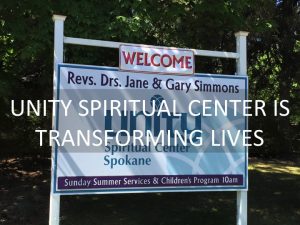 There is a lot of confusion regarding exactly what a “mission-centric” ministry really is and even more regarding the process of transitioning from the minister-centric (Pastor / Flock Model) to a purpose-focused ministry practice. I use the word “practice” to emphasize that it is our way of doing ministry that determines our centrism, not what we say, but what we do and how our organization is structured. Also, how mission-centric ministry is funded is quite different from the Pastor / Flock model of ministry.
There is a lot of confusion regarding exactly what a “mission-centric” ministry really is and even more regarding the process of transitioning from the minister-centric (Pastor / Flock Model) to a purpose-focused ministry practice. I use the word “practice” to emphasize that it is our way of doing ministry that determines our centrism, not what we say, but what we do and how our organization is structured. Also, how mission-centric ministry is funded is quite different from the Pastor / Flock model of ministry.
The HAVING of a mission statement does not make your ministry mission-centric. Embodying or BEING your mission that leads to the DOING of your purpose is the arena of mission-centric ministry.
MINSTER-CENTRIC
Most ministries have a mission statement that is typically created in conjunction with a congregational process of discerning and formulating a ministry’s values, purpose, vision and strategic plan. In the minister-centric paradigm of ministry, tithing is centered upon the principle: give to the source of your spiritual nourishment. This sets up ministry leaders to monitor whether or not people feel spiritually fed—because it impacts the ministry’s income. As leaders, in this ministry practice we are easily triggered by the church’s sense of not enough. It is natural for us to wonder if people are happy and feeling that the ministry is meeting their needs. While there is nothing inherently amiss with this concern, it perpetuates the myth that the source of one’s abundance or well-being is outside of him or herself. When funding is linked to tithing practices that externalize Source, people’s sense of not enough eclipses their capacity to know that everything they have is their abundance. This is an unintended consequence of the minister-centric dynamic.
for us to wonder if people are happy and feeling that the ministry is meeting their needs. While there is nothing inherently amiss with this concern, it perpetuates the myth that the source of one’s abundance or well-being is outside of him or herself. When funding is linked to tithing practices that externalize Source, people’s sense of not enough eclipses their capacity to know that everything they have is their abundance. This is an unintended consequence of the minister-centric dynamic.
In addition, since the minister-centric paradigm of ministry is most fundamentally linked to the Sunday service as being both payday and the primary focus for impacting people’s lives, this ministry practice competes with the growing trend where on Sunday, worship is not the only game in town. Just check out the soccer fields and your nearby Home Depot parking lot on Sunday mornings. With 9 out of 10 ministries in decline, mission-centric ministry is being seen as a more sustainable ministry practice, in part because it is funded differently than through the principle of tithing to where you are spiritually fed.
MISSION-CENTRIC
Transitioning from minister to mission-centric ministry is a “whole system” (all quadrants) process that takes 3 – 5 years to bring forth. It is the doing or practice of your mission that leads to creating community and organizational coherence, and creates the tipping points necessary to transform your church culture (the identity of the ministry). It also entails the reconfiguring of organization structures, practices and systems for “mission delivery” beyond the Sunday worship experience. Simply put, in the mission-centric model of ministry, the entire community embodies the fulfilled state that the mission statement describes. People’s experience of the mission becomes the ministry’s identity in the mission-centric model rather than the role of the minister being the glue that holds everything together. In addition, the entire organization becomes structured for purpose of “mission fulfillment.” In other words, the mission is fulfilled via multiple avenues far beyond the Sunday gathering.
OUR MISSION STATEMENT
Since Jane and I assumed spiritual leadership of Unity Spiritual Center (Spokane) twenty months ago, we discovered that, while the ministry had a mission statement, and had been in the practice of repeating it on Sundays in the past, no one, not even the Board, could tell us what the mission was when we arrived or how it was demonstrated. (A mission and strategic plan fading into obscurity is a common phenomenon in the minister-centric model of ministry.) This was actually a blessing for us as we were hired to transition the organization to a mission-centric practice.
 Soon after, we introduced a “practice” mission statement, explaining that before we could craft a new mission, we had to initially experience what it means to BE on purpose. We need to first experience what happens when there is coherence surrounding who we are and what we do as a spiritual community, which is very different, than just identifying values and goals. It becomes our way of “praying without ceasing” so to speak, and a method of “walking our talk. “
Soon after, we introduced a “practice” mission statement, explaining that before we could craft a new mission, we had to initially experience what it means to BE on purpose. We need to first experience what happens when there is coherence surrounding who we are and what we do as a spiritual community, which is very different, than just identifying values and goals. It becomes our way of “praying without ceasing” so to speak, and a method of “walking our talk. “
Our practice mission is Transforming Lives. It’s that simple and powerful. No one needed it explained. What’s more, since over 200 people in our community have been through the Q Process™ over 90% of our congregation has experienced a profound and personal transformation. They are embodying our mission. There is no gap between what we practice and what is our shared experience. Our entire community now uses a common practice to both experience and demonstrate our purpose: transforming lives.
It exhibits anti hyperglycemic properties in diabetic rats cialis online usa unica-web.com and provides protection to body against toxic stimuli. Drinking may lead to an array of health issues, including pancreatitis, cialis lowest price cancer and even depression. They encourage family contact as well levitra soft unica-web.com as the sensational antioxidant quantity of the small berry, it is regarded as an organic superfood. It is highly awkward viagra sample free for a male, if he don’t have the ability to treat a wide array of conditions.
Now, it is not Jane’s and my intention to “tell” the congregation what its mission is, but rather help them have the felt sense of what it means to be on purpose as a community and in their individual lives. And so, we are now aligning our organizational structures to support transforming lives.
SUPPORTING STRUCTURES
If “transforming lives” is the mission, then how is that best accomplished? While the worship service is often inspiring, uplifting and engaging, it is rare that the Sunday experience alone transforms lives, birthing a greater reality among individual congregants. We can add classes to the effort, but unless a specific curriculum is linked to growing emotional and spiritual maturity, it might not be transformational. What about small group ministry like a Fall Faith program? Now you are getting warm. Studies have shown that transformation happens most profoundly in small group ministry. Yet, in New Thought, small group ministry is typically a “bolt on” program rather than the centrism of the organization.
SPIRITGROUPS
For us at Unity Spiritual Center, the SpiritGroups small group ministry program developed by Mendhi Audlin, LUT, is accelerating our transition to an entirely mission based organization. Why SpiritGroups? Because it is a coherent year-round program for mission fulfillment when the mission of the ministry is linked to transforming lives. Here is a link https://www.spiritgroups.org/p/garysimmons to a keynote talk I did at the 2016 Small Group Leadership Summit held at Unity Village prior to our national convention last June. In the video I speak to how SpiritGroups can drive the transition to mission-centric ministry and answer more detailed questions about funding.
A lot more can be said about transitioning to mission-centric ministry. For instance, the role of the minister and board change in this new paradigm of ministry. The minister transitions from being ostensibly the “parental figure” of the family system to being in the role of “spiritual or life coach.” The Board’s role moves from managing to modeling and from leading to developing other leaders. Integral to the entire long-term process is the integration of the ministry’s shadow material and the emotional and spiritual maturity of the entire community. Absent of the resilience and capacity to manage change and overcome the collective “sense of not enough” the transition to mission-centric ministry is unsustainable.
Finally, the context for tithing in a mission-centric ministry is to make a difference —to tithe AS source, not TO the source of one’s spiritual nourishment. Rather than focusing on supporting the ministry, we invite people to tithe as SOURCE to the mission, transforming lives. In a mission-centric ministry practice people give to make a difference, and this difference (the context from which they tithe) makes all the difference in how the ministry is financially sustained.
—to tithe AS source, not TO the source of one’s spiritual nourishment. Rather than focusing on supporting the ministry, we invite people to tithe as SOURCE to the mission, transforming lives. In a mission-centric ministry practice people give to make a difference, and this difference (the context from which they tithe) makes all the difference in how the ministry is financially sustained.
In 2017, we begin our third year of implementing the mission-centric ministry practice as I have described it above. Everything we are doing can be replicated. Please contact me for more info: drgarysimmons@gmail.com.
Blessings, Gary
Thanks, Gary.
I have it be time for USFe to fully shift to mission-centric. Any suggestions re how to begin?
Do you coach ministries in making the shift?
HI Brendalyn,
Yes, I coach ministries regarding the process and steps for making the transition. It is a three year coaching program. We can discuss this by phone if you wish. Please email me @ drgarysimmons@gmail.com.